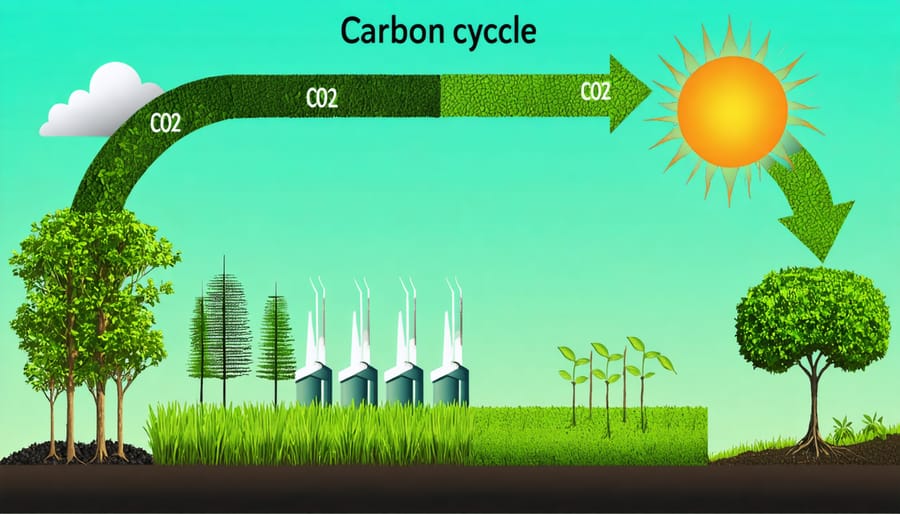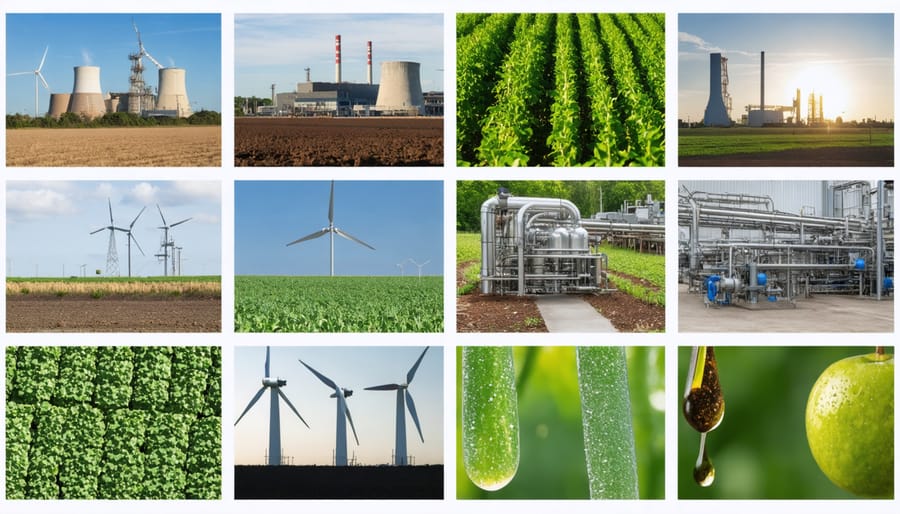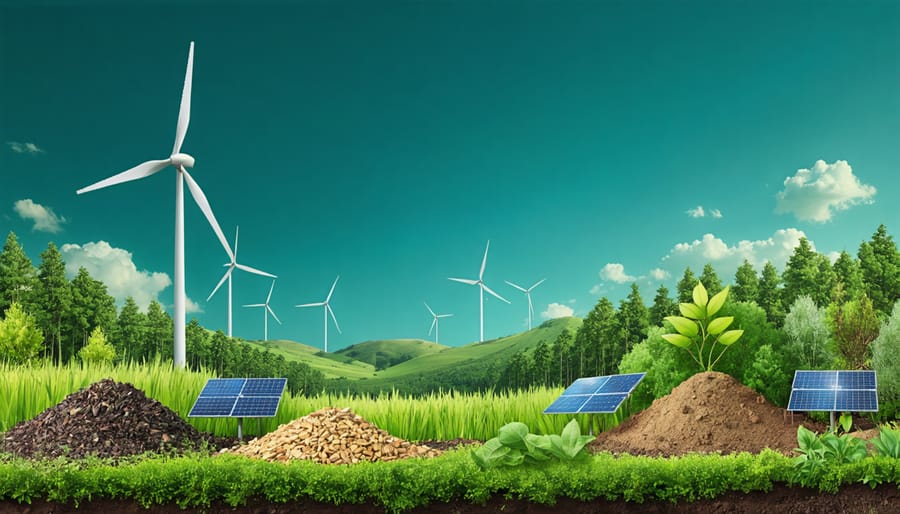Bioenergy, a promising solution to our energy challenges, harnesses the power of organic matter to generate renewable and sustainable fuel. This innovative technology transforms biomass – such as agricultural waste, forestry residues, and purpose-grown energy crops – into electricity, heat, and transportation fuels. By leveraging the natural carbon cycle, bioenergy offers a carbon-neutral alternative to fossil fuels, reducing greenhouse gas emissions and combating climate change. As Australia seeks to transition to a cleaner energy future, bioenergy presents a compelling opportunity to support local economies, create jobs, and enhance energy security. With its vast agricultural and forestry resources, Australia is well-positioned to become a global leader in bioenergy production, driving innovation and investment in this vital sector. Embracing bioenergy not only contributes to our environmental goals but also fosters a more resilient and sustainable energy landscape for generations to come.
What is Bioenergy?

Biomass Sources
Bioenergy can be derived from a wide array of organic materials, making it a versatile renewable energy source. In Australia, common biomass sources include agricultural waste, such as crop residues, animal manure, and agricultural bioenergy crops like sugarcane and sorghum. Forestry byproducts, including wood chips, sawdust, and tree prunings, also serve as valuable feedstock for bioenergy production. Urban waste, such as food scraps, garden clippings, and even sewage, can be transformed into biogas through anaerobic digestion. Additionally, dedicated energy crops, like miscanthus and switchgrass, are grown specifically for their high biomass yields and low environmental impact. By harnessing these diverse organic resources, Australia is well-positioned to expand its bioenergy sector and reduce reliance on fossil fuels. As research and innovation continue, the potential for new and sustainable biomass sources is limitless, offering hope for a greener energy future.
Conversion Processes
Biomass can be converted into energy through various processes, each with its unique advantages. Combustion is the most common method, involving burning organic materials to generate heat and electricity. Gasification transforms biomass into a combustible gas mixture called syngas, which can power turbines or fuel cells. Pyrolysis heats biomass in the absence of oxygen, producing bio-oil, syngas, and biochar. Anaerobic digestion breaks down organic matter using microorganisms, creating biogas rich in methane. Fermentation converts sugars from biomass into ethanol, a renewable fuel. These conversion processes offer flexibility in utilizing diverse biomass sources, from agricultural waste to purpose-grown energy crops. By adopting the most suitable technique for each feedstock, we can optimize bioenergy production and contribute to a more sustainable future. As technology advances, conversion efficiency continues to improve, making bioenergy an increasingly viable and eco-friendly alternative to fossil fuels.
Benefits of Bioenergy as a Renewable Energy Source
Carbon Neutrality
Bioenergy plays a crucial role in achieving carbon neutrality by significantly reducing net carbon emissions. When biomass is used for energy production, it releases the same amount of carbon dioxide that was absorbed during the plant’s growth, creating a closed carbon cycle. This process effectively offsets the emissions from bioenergy use, making it a carbon-neutral alternative to fossil fuels. Australia has set an ambitious target of reaching zero carbon dioxide emissions by 2050, and bioenergy is poised to be a key contributor to this goal. By replacing carbon-intensive energy sources with sustainable bioenergy, we can substantially reduce our carbon footprint and mitigate the impacts of climate change. Embracing bioenergy not only supports our transition to a low-carbon future but also creates opportunities for local communities and industries to thrive in a green economy.

Energy Independence
Bioenergy offers a unique opportunity for Australia to achieve greater energy independence by harnessing locally sourced renewable resources. By cultivating energy crops and utilizing agricultural waste, we can reduce our reliance on imported fossil fuels and support regional economies. Imagine a future where rural communities thrive by producing sustainable biofuels, creating jobs, and contributing to the nation’s energy security. Investing in domestic bioenergy production not only enhances our resilience to global energy market fluctuations but also showcases Australia’s commitment to a greener, more self-sufficient future. With the right policies and support, bioenergy can play a pivotal role in our journey towards energy independence.
Economic Opportunities
Bioenergy offers exciting economic opportunities for Australia, particularly in the agriculture and energy sectors. By embracing this renewable energy source, we can create new jobs and stimulate economic growth while reducing our reliance on fossil fuels. Farmers and landowners can benefit from growing energy crops or utilizing agricultural waste, providing additional income streams and diversifying their operations. The development of bioenergy facilities across the country will generate employment in construction, operation, and maintenance roles. Moreover, as Australia becomes a leader in bioenergy technology and expertise, there will be opportunities to export our knowledge and products to other countries seeking sustainable energy solutions. By investing in bioenergy, we not only support the transition to a cleaner energy future but also foster innovation, attract investment, and strengthen our economy. It’s a win-win scenario that highlights the incredible potential of this renewable energy source to drive positive change in Australia.

Bioenergy Applications in Australia
Power Generation
Bioenergy is a versatile renewable energy source that can be used to generate electricity for homes and industries. In Australia, biomass power plants convert organic materials like agricultural waste, wood chips, and municipal solid waste into electricity through combustion or gasification processes. This electricity is then fed into the grid, providing a reliable and sustainable power supply. Bioenergy can also be used for combined heat and power (CHP) systems, which efficiently produce both electricity and heat for industrial processes or district heating networks. One inspiring example is the Condong Sugar Mill in New South Wales, which uses bagasse, a sugarcane byproduct, to generate enough electricity to power over 30,000 homes. As Australia continues to explore renewable energy options, bioenergy has the potential to play a significant role in transitioning away from fossil fuels and creating a more sustainable future for generations to come.
Transportation Fuels
Biofuels, such as ethanol and biodiesel, are increasingly being used to power vehicles in Australia and around the world. These renewable fuels are derived from plant materials, including sugarcane, corn, and vegetable oils. By blending biofuels with traditional gasoline or diesel, or using them as standalone fuels in modified engines, the transportation sector can significantly reduce its reliance on fossil fuels and lower greenhouse gas emissions. In fact, studies have shown that biofuels can cut carbon dioxide emissions by up to 80% compared to conventional fuels. As Australia continues to invest in biofuel production and infrastructure, the country is well-positioned to become a leader in sustainable transportation solutions. With ongoing research and development, biofuels have the potential to play a crucial role in decarbonizing the transportation sector and contributing to a cleaner, greener future for all Australians.
Successful Case Studies
Australia is leading the way in bioenergy innovation, with numerous success stories showcasing the potential for renewable energy. In Victoria, a waste-to-energy plant is transforming 33,000 tonnes of household rubbish into electricity for 2,000 homes annually. Queensland’s sugar mills are generating clean power from sugarcane waste, reducing emissions and providing a new income stream for farmers. A sewage treatment plant in Perth is producing biogas to power its operations, demonstrating the versatility of bioenergy. These inspiring examples highlight how bioenergy is making a tangible difference in communities across Australia, paving the way for a more sustainable future.
Challenges and Future Outlook
Technological Advancements
Researchers and innovators are continuously working to enhance bioenergy technologies, making them more efficient, cost-effective, and accessible. Advancements in genetic engineering are enabling the development of high-yield energy crops that require fewer inputs and can grow on marginal lands. Cutting-edge conversion processes, such as advanced gasification and pyrolysis, are improving the efficiency of transforming biomass into energy. Moreover, the integration of bioenergy systems with other renewable technologies, like solar and wind power, is creating hybrid solutions that maximize resource utilization. As these advancements progress, bioenergy is becoming an increasingly viable and sustainable option for meeting Australia’s energy needs while reducing our carbon footprint.
Policy Support
Government policies and incentives play a crucial role in driving the transition to renewable energy sources like bioenergy in Australia. By implementing supportive regulations and offering financial incentives, policymakers can encourage the adoption of bioenergy technologies and create a favorable environment for sustainable energy projects. These policies not only help mitigate climate change but also stimulate economic growth and create new job opportunities in the renewable energy sector. As more Australians recognize why we should consider bioenergy, it is essential for the government to continue supporting this clean and renewable energy source through targeted policies and incentives, ensuring a sustainable future for generations to come.
Conclusion
In conclusion, bioenergy stands out as a promising renewable energy solution for Australia’s sustainable future. Its ability to generate power from organic waste, capture carbon, and support local economies positions it as a key player in the nation’s energy mix. By embracing bioenergy, Australia can reduce its reliance on fossil fuels, lower greenhouse gas emissions, and create new job opportunities in regional areas.
The success stories of bioenergy projects across the country demonstrate its practical applications and potential for growth. As Australia continues to face the challenges of climate change and energy security, it is crucial that we invest in renewable solutions like bioenergy. By supporting research, development, and implementation of bioenergy technologies, we can pave the way for a cleaner, more sustainable future.
It is up to all of us – individuals, organizations, and policymakers – to champion the cause of bioenergy and work together to realize its full potential. Let us embrace this renewable energy solution and take action to build a greener, more resilient Australia for generations to come.

